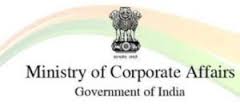 All the 11 benches of the newly constituted National Company Law Tribunal (NCLT) will be fully functional in the next “couple of days”, a top Corporate Affairs Ministry (MCA) official said.
All the 11 benches of the newly constituted National Company Law Tribunal (NCLT) will be fully functional in the next “couple of days”, a top Corporate Affairs Ministry (MCA) official said.
Infrastructure is ready in all the 10 cities where the NCLT benches are being set up. The human resources aspect has also been taken care of and adequate steps are being taken to start work immediately.
To begin with, NCLT will handle all pending cases before the Company Law Board and other matters not assigned to any other Court, the official said.
“There will be no transition problem for existing CLB cases,” the official added.
As on date, as many as eight members have joined NCLT, out of approved 25 members. “The remaining members are expected to join in the next few days. They will be posted in various benches,” the official said.
The MCA has also planned a 10-day colloquium in July for the NCLT members, the official added. Asked about the status of cases before High Courts (company cases), the MCA official said the High Court will be the second stage of transfer.
“We will let the CLB cases transition to stabilise for some time and then, in discussion with NCLT Chairman, decide on the High Courts related matter,” the official said.
The creation of NCLT from June 1 is expected to speed up delivery of justice in corporate cases. Sai Venkateshwaran, Partner and Head, Accounting Advisory Services, KPMG in India, hailed the MCA move to set up NCLT and NCLAT.
“We can expect to see the new Companies Act become a reality in its entirety in the coming months,” Venkateshwaran said. The time required for setting up of the NCLT and NCLAT was one of the key reasons for the Companies Act 2013 not being fully operationalised, he said.
However, with the setting up of these tribunals, the way has been paved for operationalising most of the remaining parts of the Companies Act 2013, he added. .
Meanwhile, the Company Law Board hearing in the Financial Technologies’ Board removal case did not take place on Thursday as the CLB stood dissolved on May 31 by virtue of the government move to set up NCLT from June 1.
Indications are that an NCLT bench will hear this matter in the coming days, sources said.
Source: http://www.thehindubusinessline.com/todays-paper/tp-news/company-law-tribunal-benches-will-be-fully-functional-in-next-few-days/article8688161.ece
 The Income Tax department has launched an ATM-based validation system for filing e-ITRs by taxpayers as part of its measure to enhance the paperless regime of filing the annual IT returns.
The Income Tax department has launched an ATM-based validation system for filing e-ITRs by taxpayers as part of its measure to enhance the paperless regime of filing the annual IT returns.




